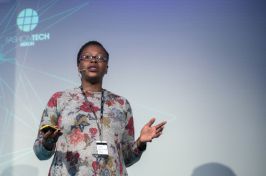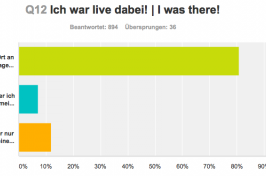Why do lies work so well? This was the topic of journalist Ingrid Brodnig’s speech "Nichts als die 'Wahrheit' – Warum Lügengeschichten so gut funktionieren" (engl. "Nothing but the truth – Why lies work so well") on Day 3. In our theme track #Hatespeech, she recommends three steps to fight the dissemination of disinformation.
The truth can be very subjective at times, especially when it comes to a right-wing mindset. Relevant blogs network and quote one another. This leads to the development of a parallel reality. Lies are disseminated to make an objective debate impossible.
What are the methods of the ones who cause this? What could possible counteractions look like to mitigate such lies? Ingrid Brodnig’s aim is to give conspiracy theorists and haters a hard time. At the re:publica TEN she talked about the psychology behind false information.
"Lies work through repetition", says Brodnig. Disinformation starts its voyage through the digital world; the copy paste principle makes it grow bigger. The internet, however, is not the source for lies. Rather, it is their promoter.
Disinformation collects in "digital reverberation chambers", as Brodnig calls them, merely offering users the kind of information that resonates with their views. The echo grows stronger. "On the internet, dissenters are only a click away. But this click never happens."
Ingrid Brodnig recommends three courses of action in the fight against lies:
1. Formulate any correction smartly
Avoid technical faults when correcting. The original misinformation should not be rephrased when rectified. Brodnig proposes an affirmative refutation. Issues mentioned should not be repeated. Instead, new facts should be listed to counteract the original statement.
2. Call on other values
We must maintain minimum principles. If we do so, we have already achieved a great deal.
3. Legal self-defence
Filing law suits is about drawing a red line. Companies must remove right-wing content immediately.
Canards do not only exist since the beginning of the internet, says Brodnig. As they are humanised, they are not avoidable. “But we can make it harder for falsifiers”, she concludes.





